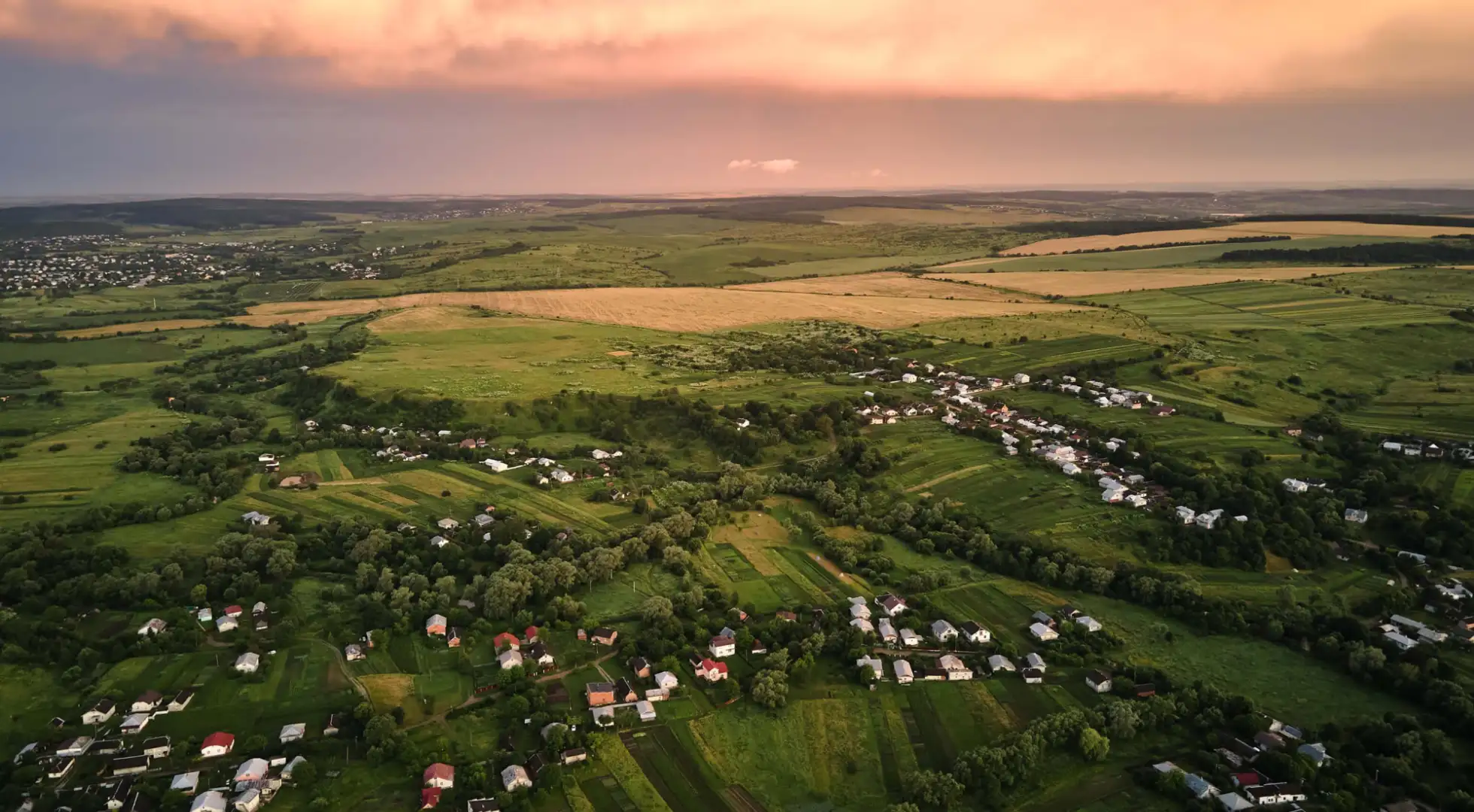USDA Loan Closing Costs in 2025: What to Know

USDA loan closing costs can range from 3-6% of the home price for things like lender fees, the appraisal, title insurance, and more, but these costs may not have to come from your own pocket.
Homebuyers looking to purchase property outside of larger cities and urban areas may be able to use a United States Department of Agriculture (USDA) home loan program to buy with favorable interest rates and zero down payment.
However, this doesn't necessarily mean you'll be able to purchase a home with no out-of-pocket expense. You'll still be responsible for covering USDA loan closing costs, which typically run up to 6% of your purchase price.
Here’s what to expect for closing costs on a USDA loan, as well as some strategies for reducing the funds you'll need.
Key Takeaways
USDA loan closing costs are usually between 3% and 6% of the price of your home.
Costs can be thought of as loan-related and property-related expenses.
Buyers can often lower their closing costs by shopping around with different lenders and service providers.
Options for covering your closing costs include seller concessions, lender credits, and down payment assistance programs.
How USDA Loan Closing Costs Work
For most buyers, the closing costs on a USDA loan can be up to 6% of their total purchase price – or even more for lower cost properties. Expenses can generally be categorized as loan-related and property-related costs.
We've compiled a list of the most common USDA loan closing costs, but remember that you may only be responsible for some of these expenses. Similarly, there may be some situations where you might need to pay for other fees not included here.
Your lender will provide you with a loan estimate showing a detailed breakdown of your actual expected closing costs within three days of submitting your mortgage application.
Loan-Related Costs
These are loan-related USDA closing costs, which are primarily assessed by your lender. This list includes fees related to the processing and issuance of your mortgage:
Loan Origination: These represent the costs that your lender incurs when processing and underwriting your mortgage. Not all USDA lenders charge origination fees, and those who do may be willing to negotiate a lower amount. Estimated Costs: up to 1% of your loan
Processing Fee: Pays for the lender’s administrative costs of loan review and underwriting. Estimated Cost: $500 to $1,000
Credit Report Fee: Lenders need to pull your credit report. Credit scores and history are a major part of the loan assessment. Estimated Cost: $150
Lender Discount Points go toward reducing your interest rate and monthly payments. Estimated Cost: Any amount you choose. The higher the fee, the more your rate is reduced
Rate Lock/Float-Down Fees: Lenders may charge a rate lock fee to lock in your rate, although this is often considered a "junk fee" that isn't necessary. Locking a rate should be handled at no cost. A float-down fee is an option if rates drop and you want to lock into the lower interest costs. Estimated Cost: 0.25% to .50% of your mortgage amount for a float down.
Title Research/Insurance: Title research ensures there are no other loans or ownership claims on the property. Title insurance protects you and your lender if any future claims against the title arise. Estimated Cost: Depends on home value. Expect at least $1,000
Appraisal Fee: This is the cost of having your purchase appraised and ensuring the home is worth what you’re paying and meets USDA minimum property requirements. Estimated Cost: $400 to $700
Recording/Documentary Stamp Fee: Recording fees are the costs associated with entering your purchase into the public record. These expenses will vary by county. Estimated Cost: $100 to $300
Flood Determination/Certification Fee: A flood certification is conducted to determine whether the property is located within a FEMA-labeled flood zone. If so, your lender will require you to carry flood insurance in addition to your standard homeowner policy. Estimated Cost: $25 to $50
Per Diem Interest: This is an interest charge from the time the loan closes to the end of that month. Closing later in the month reduces this charge. Estimated Cost: $500 to $1,500
Property-Related Costs
These costs relate to the property you’re purchasing and are typically due to third-party vendors and governing bodies separate from your mortgage company.
Prepaid Taxes and Insurance Premiums: Prepayment requirements for property taxes and insurance premiums can vary by the county you’re in and the lender. However, you can typically expect to pay for at least a year of homeowners insurance and four to six months of property taxes at closing. Estimated Cost: ~0.5% of the purchase price for taxes; insurance varies greatly by location
Homeowners Association Dues: If you’re purchasing a home within a homeowners association, you can expect to pay a prorated portion of your HOA dues at closing. Some HOAs also charge and ownership transfer fee. Estimated Cost: varies by HOA
Factors Affecting Your USDA Closing Costs
Most buyers will pay between 3% and 6% in USDA loan closing costs, although your true figure may be higher or lower depending on:
The lender you choose
The location of your home
The home value (lower home values require higher closing costs on a percentage basis)
Local insurance and tax rates
Whether you decide to purchase lender discount points
Whether aspects of the property require a specific inspection
If you shop around for loan-related services
Paying For Your Closing Costs
While USDA loan closing costs are traditionally paid by the buyer at closing, some alternative options and strategies may reduce the amount of cash that you'll need to bring to the table.
Rolling Closing Costs Into Your Loan
Sometimes, your lender might allow you to roll your USDA loan closing costs into your new mortgage balance. If your home appraises for more than your purchase price, you may be able to include your closing expenses up to the total appraised value.
For Example: The agreed-upon home offer is $225,000 with estimated closing costs of $9,000 (4% of the purchase price). The appraisal comes in at $235,000. Your lender allows you to wrap the entire amount into your loan for a total balance of $234,000, and you close on your purchase with virtually no money out of pocket.
Keep in mind that even if your home does appraise high, you will still need to have the qualifying income to support the higher loan amount.
Seller Concessions
USDA guidelines allow property sellers (and other interested parties such as real estate agents) to contribute as much as 6% of the purchase price to cover closing costs and prepaid taxes and other property-related expenses required by the lender.
These funds cannot be used as a down payment. But they can be put toward your total closing costs. Funds are “use them or lose them.” So if you have $8,000 in closing cost assistance from the seller, but your closing costs are only $7,000, leverage discount points to use the remaining $1,000 to buy down your rate.
Lender Credits
Lender credits are essentially the opposite of discount points: in exchange for a slightly higher interest rate and monthly payment, your lender pays for some of your closing costs.
However, not all mortgage companies may be willing to offer lender credits, and accepting a higher interest rate will result in you paying more interest over the lifetime of your loan.
Gift Funds
The USDA allows buyers to receive gift funds from third parties without interest in the transaction. This is most commonly:
Family members
Close friends
Employers
Labor unions
Non-profit organizations
Homeownership grants
Gift funds can be put towards your closing costs or paying down your loan balance, but they must be accompanied by a gift letter documenting the donor, the total amount, and the fact that the funds are a legitimate gift and not a loan requiring repayment.
Down Payment Assistance
While it may seem counterintuitive to apply for down payment assistance with a loan that does not require a down payment, you can generally use these funds to cover your USDA loan closing costs as well.
Down payment assistance programs vary by locale and are typically offered through:
State housing finance agencies
County housing programs
City and other municipal governments
Native American tribal agencies
Non-profit organizations
Employers
USDA Closing Costs vs Guarantee Fees
All USDA-backed loans come with an upfront guarantee fee of 1%, which is due at closing and is typically considered a closing cost on USDA loans.
Unlike other closing costs, the USDA allows you to wrap the upfront guarantee fee into your mortgage, even if the resulting loan amount is more than the appraised value. For example, you can get an estimated $202,000 USDA loan on a $200,000 home purchase (100% of the purchase price plus the 1% guarantee fee).
USDA loans also have an annual guarantee fee of 0.35% based on your loan balance and divided evenly among the twelve monthly payments. This equates to about $29 per month per $100,000 borrowed.
USDA Loan Closing Costs vs Other Types of Loans
Closing costs are generally similar between different types of mortgages – in nearly all cases, you'll have expenses such as origination fees, title search and insurance fees, and appraisal fees.
Where the programs differ, however, is in the unique fees they charge. With the USDA, you're paying a 1% upfront fee and an ongoing fee. How do these fees compare to other types of loans and their program-specific closing costs?
Loan Program | Upfront Fee (based on loan amount) | Ongoing Fee (paid monthly in 1/12 installments) |
USDA | 1.0% | 0.35% per year |
Conventional | None | Typically 0.25%-1.5% per year according to MGIC |
FHA | 1.75% | Usually 0.55% per year |
VA | Usually 2.15% | None |
USDA Loan Closing Costs in a Nutshell
USDA loan closing costs can be an unexpected expense when the program is thought of as a zero-down loan. While you’ll usually pay closing costs out-of-pocket, this program is much more affordable than those that also require a down payment.
For a more accurate idea of your estimated closing costs on a USDA loan, as well as what you might expect with other mortgage alternatives, take a look at the current interest rates and apply with a reputable lender today.





